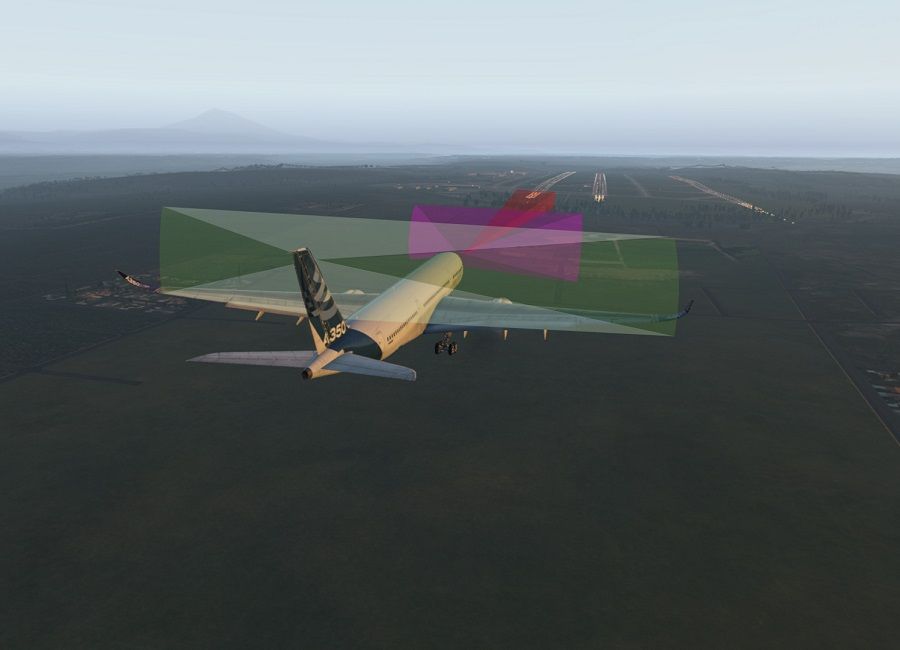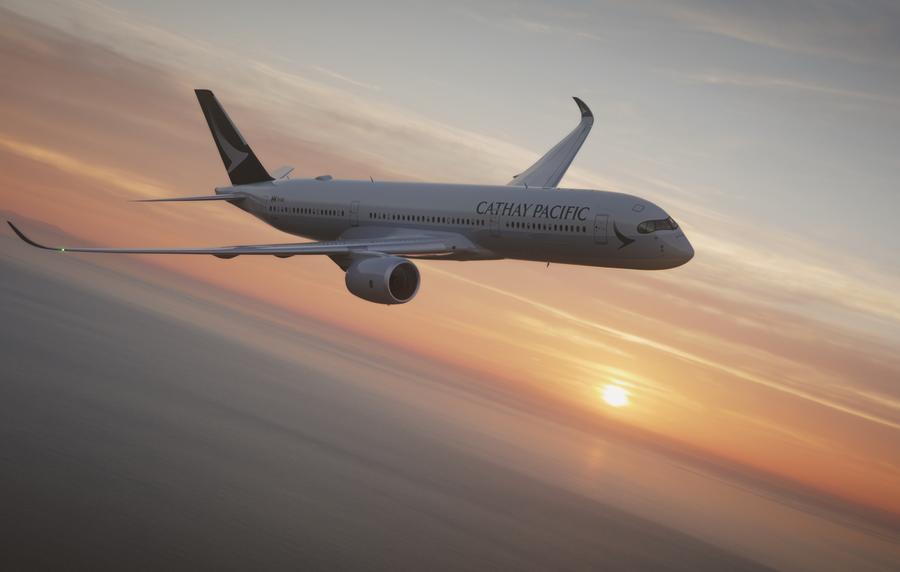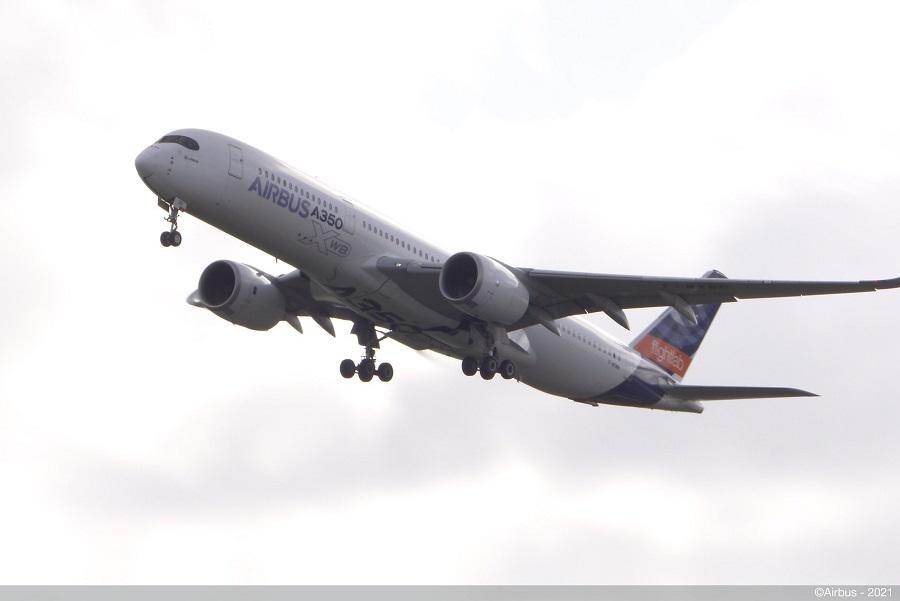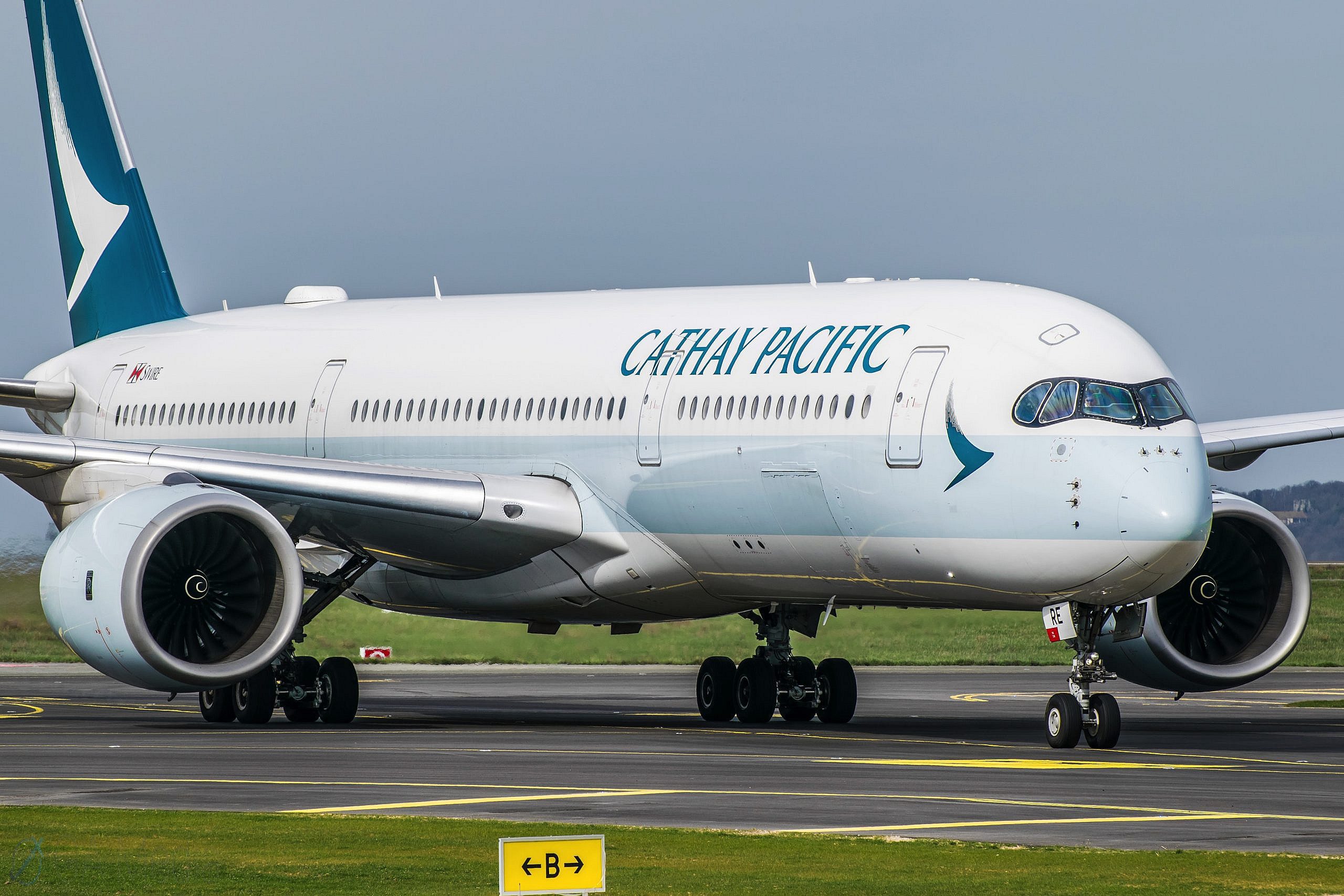Airbus is working with the airlines, in a project that could allow single-pilot operations for certain segments of long-haul flights, with its A350.
A few months ago, we saw an Airbus initiative to get an A350 to taxi out, take-off, land and taxi in again. This was the ATTOL project, part of the manufacturer’s ‘Up Next’ series of projects. However, they have now concluded that project. This initiative for single-pilot, long-haul operations is a separate Airbus idea.

Essentially, it works like this: an A350 will take off with two pilots, both of them sitting in the cockpit, as normal. They will taxi out, take-off and get the plane in cruise altitude. Normally, for long trips they would eventually swap seats with one or more other pilots, to rest. But in this new project, they could fly their long-haul trip by taking turns in operating the Airbus single-pilot. The other pilot would simply rest.
Airbus call these limited single-pilot operations “reduced crew” long-haul flights. The manufacturer is working with a number of airlines, like Cathay Pacific and Lufthansa, in a consulting role. And right off the bat, there are some clouds forming: neither airline states that they will adopt the technology. A spokesperson for Cathay Pacific said:
“While we are engaging with Airbus in the development of the concept of reduced crew operations, we have not committed in any way to being the launch customer.“

Cathay Pacific stressed that the rollout of such single-pilot, long-haul Airbus flights would have “absolutely no compromise on safety”. Plus, it would only come after extensive testing. Further, they added:
“The appropriateness and effectiveness of any such rollout as well as (the) overall cost-benefit analysis (will) ultimately depend on how the pandemic plays out.“
Reluctant Partners?
Likewise, Lufthansa confirms that they’ve worked with Airbus on this single-pilot, long-haul project. However, they state that they have no plans to use it. From its side, Airbus aims to have this project in a state ready for certification, by 2025. But getting all aviation safety authorities to agree on the necessary factors for certification, will be interesting.

Europe’s Aviation Safety Authority (EASA)’s chief, Patrick Ky, said this last January:
“Typically on long-haul flights when you’re at cruise altitude there’s very little happening in the cockpit. It makes sense to say OK, instead of having two in the cockpit, we can have one in the cockpit, the other one taking a rest, provided we’re implementing technical solutions which make sure that if the single one falls asleep or has any problem, there won’t be any unsafe conditions.“
The Airbus A350 has some features that should make it a good candidate for single-pilot cruise in long-haul. The aircraft can perform an automatic emergency descent without pilot input, in the event of cabin depressurization. Also, it has the Auto-Pilot/Flight-Director (AP/FD) TCAS mode, that Airbus first certified in the A380.

Airbus is making further changes, specifically for the long-haul, single-pilot in cruise operation. They include a special toilet that pilots could use during their shift, with ATC coordination! The principle is that if the flying pilot has a problem or is incapacitated, the second pilot will have the time to come and take over.
Single-Pilot Long-Haul – Airbus Addressing Concerns
To use such a system, the aircraft would need to have systems that can monitor the vital signs and alertness of the pilot. Today, flight diversions due to a pilot feeling unwell, are not rare. But whereas pilots could have some warning if they have a stomach bug, other health issues are more sudden. It’s difficult to see how Airbus could cover all eventualities in these long-haul, single-pilot phases of flight.

Critics point out that the second pilot could take as much as 15 minutes to wake up and be ready to operate safely. They say that Airbus would have to demonstrate that its systems can handle autonomous flight for that long, without inputs. Pilot groups have also raised concerns, questioning the programme’s benefits, in the overall cost structure of a flight. They also add that the move points to a cost-cutting approach, that “could lead to higher risks”.
More critics point to recent accidents, like Air France AF447 in 2009 over the Atlantic. The triggering event in this incident was a temporary sensor malfunction. Moreover, Airbus would also have to ensure that long-haul operations with single-pilot at cruise, also meet other concerns. In addition to safety, there is also the matter of security, from bad actors onboard.

Again, with the distances involved, a variety of different aviation authorities would have to agree on such a change. Cathay Pacific wouldn’t consider long-haul with single-pilot in cruise, if China doesn’t approve it.
The question is, could the public slowly accept such a system, even if manufacturers can certify it?




4 comments
Barry Leach
Dear @Airbus, on behalf of a boatload of aviation professionals who are also passengers from time-to-time, we will not fly on an aircraft with only 1 pilot and will lobby Congress to forbid the procedure as unsafe. @ALPA @NATCA @FAAMA ✈️
Andrew Steitz
Although senior pilots are paid very well (as they should be) reducing the number of pilots by one on a long haul flight will lower ticket price on a long haul flight by what, $4-$5? No thanks, I will gladly pay the extra money to have one more pilot
trevie1970
I am not sure if its a good idea to only have one person up front. What about the pilot who wanted to commit suicide and other pilot was not able to gain access to the cockpit, causing the plane to crash into a side of a mountain.
The policy is now that a flight crew member has to sit up front, whilst one of the pilots is not in the cockpit.
pat olt
Insane ideas are very trendy nowadays …
Of course nobody will commit to being the launch customer! Just look at any video showing the A350 cockpit: the pilots are not flying, they are programing computers. They are not even “in an aircraft” but working in an office with a keyboard and computer screens in front of them. In fact there is no pilot flying anymore, there are 2 pilots monitoring …
Remembering what happened to AF447 where the 2 pilots never understood what was going on, trying to understand the flow of computer messages and alarms, I think they are trying to implement solutions where the pilots will definitely become passengers of their own aircraft. The cure is being worse than the affliction. As long as everything works perfectly no problem but in case of any technical issue … good luck.
With already the quack’s idea of “flying taxis” in cities, the next step should be automatic airliners with no pilots and star wars robots as cabin crew. As things now stand, why not?
Anyway, one thing’s for sure: I will basically never fly in a A350 no more than in any single pilot long-haul, whatever is the manufacturer.